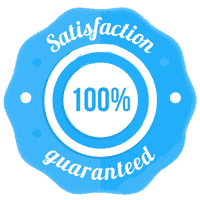- Home
- About Us
- Services
- Online Assignment Help
- Auditing Assignment Help Service
- Nursing Assignment Help
- Excel Assignment Help
- Advanced Economics Homework Help
- XML Assignment Help
- Strategic Management Assignment Help
- Logarithm Assignment Help
- Probability Assignment Help
- Matrices Assignment Help
- Commercial Bank Management
- Thesis Proposal Help
- Corporate Strategy
- Electrical Engineering
- Civil engineering
- Mechanical Engineering
- Electronics Engineering
- Financial Plan Development
- Research Paper
- Political Science Assignment Help
- Operations Management Assignment Help
- Computer Vision Assignment Help
- Commercial Bank Management
- IT Security Assignment Help
- College Essay Help
- Term Paper Help
- Medical Science Assignment Help
- Nursing Thesis Writing Help
- Religion
- Thesis Help
- Supply Chain Management Assignment Help
- Australia Assignment Help
- Cause and Effect Essay
- International Finance Assignment Help
- Statistics Assignment Help
- Computer Science
- Information Technology
- Bioinformatics Assignment Help
- Biostatistics Assignment Help
- Excel Assignment Help
- Taxation
- Research Proposal Help
- SAASU Assignment Help
- Auditing Assignment Help Service
- Workplace Learning in Finance
- Dissertation & Homework Help
- Custom Essay Writing Help
- Online Assignment Help
- Reviews
- Tutors
Cooperation in the supply chain can increase the profitability and also improves the delivery performance and service by reducing the logistics costs. The idea of making profits with the proper implementation of SCM can be traced back to the definition used within logistics. Focus here is on reducing the costs of logistics by, for example, reducing transport, inventory and order processing costs.
A total cost analysis can illustrate how much SCM cooperation can contribute to overall savings, and as a result, why it is a good idea to focus on costs. However, SCM cooperation should not be seen solely as a cost reduction project. Factors such as improved lead time, fewer out-of-stock situations and improved quality can just as well contribute to increased value by positively affecting the volume of sales, increasing value by positively affecting the volume of sales, increasing the price margin, or reducing time to market. These factors can sometimes affect the bottom line result more than simple cost reductions. As a result, there will always be a balancing act between potential revenue and the goal that should be set for supply chain cooperation.
Methods of measurement
Before the objectives, focus areas and goals of cooperation can be articulated, it is necessary for each company to have a clear overview of their own key logistics figure as well as how differing logistical initiatives will affect the company’s totally generated value. Few companies have this total overview before embarking on SCM cooperation.
A good starting point would be to get an overview of the company’s total cost of logistics. The analysis of the total cost of ownership can create a baseline for measuring internal and external performance in terms of logistics.
Total Cost of ownership (TCO) can be calculated in the following manner:
TCO = Purchase price + Transportation costs + Warehouse costs + Transaction costs (Purchase Orders, goods receipt, invoices) + Quality Control/ Claims + Handling of goods + Administration costs/Staff
The disadvantage of using exclusively the TCO analysis as the basis for decision making is that there is a risk of making decisions that optimal from a total cost perspective, but which are not appropriate in relation to the company’s total revenue. This is a possibility because, among other reasons, TCO does not include costs generated by assets other than inventory and accounts receivable.
A model that makes it possible to connect logistic performance with the company’s bottom line result is the Economic Value Adding (EVA) model. This model allows stakeholders focus more on measuring and calculating value creation than on maintaining value. Therefore, cost of capital is also included in the calculations.
We deliver a well-researched academic paper tailored to your specifications at a fair price while ensuring timely delivery. Our service is known for providing top-scoring, plagiarism-free research papers. Additionally, we offer unlimited revisions and 24/7 customer support as part of our commitment to quality.
So, don’t hesitate—place your order today and receive expert academic assistance instantly!
For more details you can visit our website at https://www.helpwithassignment.com/Supply-Chain-Management-Assignment-help and http://www.helpwiththesis.com






